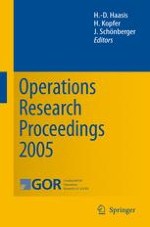This volume contains a selection of 128 papers presented in lectures during the international scientific symposium "Operations Research 2005" (OR 2005) held at the University of Bremen, September 7-9, 2005. This international conference took place under the auspices of the German Operations Research Society (GOR).
The symposium had about 600 participants from countries all over the world. It attracted academics and practitioners working in various fields of Operations Research and provided them with the most recent advances in Operations Research as well as related areas in Economics, Mathematics, and Computer Science including the special interest streams Logistics and New Maritime Businesses.
The program consisted of 3 plenary and 15 semi-plenary talks and about 400 contributed presentations selected by the program committee to be presented in 20 sections.
